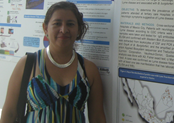
We really appreciate the interest in our work and your comments addressed in the following paragraphs. Recovering Borrelia from clinical specimens is a difficult task, even in endemic areas, and this is a reason why CDC and EUCALB have elaborated criteria for serologic diagnosis of the infection (1,2). Attempts in Mexico and Brazil to isolate the bacteria from clinical specimens and vectors have been unsuccessful so far and the evidence is limited to immunological and molecular tests (3e5). In Mexico, these evidences have been confirmed in a number of clinical and epidemiological studies; initial serologic studies were community-based surveys in different regions of the country with screening by ELISA and confirmation with a validated WB test (3). Mexico City and its Metropolitan area was identified as a region with higher seroprevalence and an active search for clinical cases was initiated (4,6). We identified clinical cases of Erythema migrans and lymphocytoma and confirmed B. burgdorferi by serologic, molecular, and histological tests (4). In addition, the presence of Borrelia infection in ticks was documented by immunohistology with monoclonal anti-OspA antibodies and by PCR (5). Furthermore, infection in Peromyscus leucopus mice and in infected ticks has been documented with molecular tests; and we model the risk for Lyme disease in the Texas-Mexico transboundary region (7). In a recent study, we confirmed the presence of antibodies against purified and specific antigens of different Borrelia species in cerebrospinal fluid from patients clinically suggestive of neuroborreliosis. In summary, in the absence of B. burgdorferi isolates, we have accumulated epidemiological, clinical, serologic, and molecular evidences for the presence of the infection in our region (3e7).








